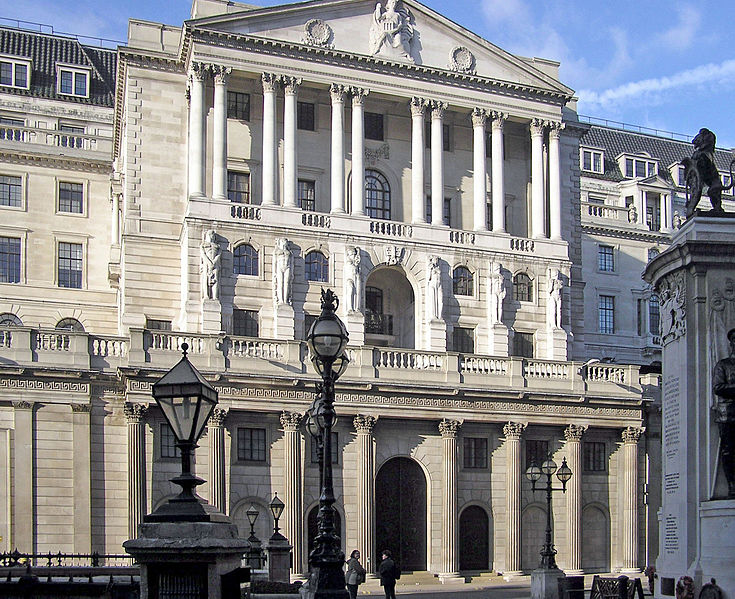In late 2008, the Fed was very worried about inflation. But they also faced a financial crisis. In response, they injected liquidity into the financial system system to help banks, while simultaneously instituting a program of paying interest on bank reserves in order to prevent that extra liquidity from boosting aggregate demand. As a result, demand collapsed and we plunged into the Great Recession.
At the time, the Fed was accused of trying to rescue Wall Street without helping Main Street. It might have been better if they had done the reverse. Keep that history in mind when you read this observation from the Financial Times:
Central banks could be forced to backstop crucial parts of the financial system that are vulnerable to higher interest rates, undermining their attempts to fight inflation, the Bank for International Settlements warned on Monday.
The BIS, dubbed the bank for central banks, said the crisis that unfolded in UK gilt markets in September underlined the risk that monetary authorities could be forced to inject liquidity into financial markets at a time when they are trying to rein in price pressures through higher interest rates and are shrinking their balance sheets.
In fairness, the BoE is aware of the issue with moral hazard:
Andrew Bailey, the BoE governor, told the Lords economic affairs committee last week that it had been “imperative” to end the operation promptly. The operation constituted a “serious moral hazard problem”—since parts of the market “would love to have the Bank of England permanently offering to buy gilts”—and “was running directly counter to the operation of monetary policy.”
If modern economies cannot survive 5 percent interest rates without triggering a financial crisis, then we need to rethink a wide range of policy issues including both monetary policy and also the various ways that previous government bailouts have tended to encourage more risk-taking by financial firms.


READER COMMENTS
vince
Dec 13 2022 at 3:25pm
Another example of that vulnerability was the repo crisis in September 2019, which started another round of QE.
Why is all this micromanagement of financial markets just another implementation of Industrial Policy?
Thomas Lee Hutcheson
Dec 13 2022 at 4:06pm
The Fed was alone in worrying about inflation in late 2008. TIPS was well below target.BOE was “forced” to act becasue regulators had allowed pension funds to invest imprudently. Financial crises are the result of failures in prudential regulation. This is not to say that the Fed should not have played hardball with the institutions it bailed out, essentially turning their franchise value over to other investors.
Scott Sumner
Dec 14 2022 at 11:57am
“Financial crises are the result of failures in prudential regulation.”
No, we have far more regulation than before, and it hasn’t solved the problem. The crises are caused by a mixture of government protection that encourages risk taking (moral hazard), and unstable NGDP growth.
David S
Dec 13 2022 at 7:15pm
5% Interest rates? Surely it will tank the economy. It reminds me of the horrors of the 1990’s when the bread lines stretched down the sidewalk and the only real hero in America was Kenneth Starr. Maybe we could live through those times again, but with Jack Smith as our sword wielding angel of justice.
I wonder if Powell remembers those days.
Capt. J Parker
Dec 14 2022 at 11:50am
Moral hazard is like the weather, everyone talks about it but on one ever does anything about it.
Also;
Parts of the market would love to have the Fed pay IOR on huge piles of excess reserves forever (read: inject liquidity), even in times when the Fed is is trying to reign in price pressures through higher interest rates and shrinking balance sheets.
I fully agree on the rethink. In the case of the Fed and the 2008 bailout, it seems to me that US financial industry figured out how to offload risk on to the US taxpayer. This will become self evident when the following two things happed:
Treasury has to start paying the Fed with taxpayer dollars so the Fed can meet it’s IOR obligations.
After some months of the Fed being a cash sink, someone does the long term math and determines that the 2008 bailout was a net negative for Treasury
Scott Sumner
Dec 14 2022 at 11:59am
“Moral hazard is like the weather, everyone talks about it but on one ever does anything about it.”
Actually, they do something about it—they make it worse with bailouts that increase the problem. BTW, in the US the moral hazard created by FDIC is at least as big a problem as the moral hazard created by the Fed.
TF
Dec 20 2022 at 5:57pm
I do not understand the FTs reasoning ( if they have any) why 5 percent rates hurt financial companies. It’s actually the opposite. 5 percent short rates hurt short term borrowers. That is the Federal govt and lower income people. They help lenders.
Comments are closed.